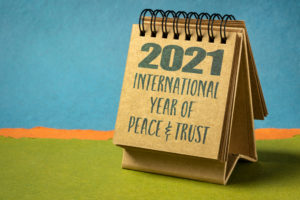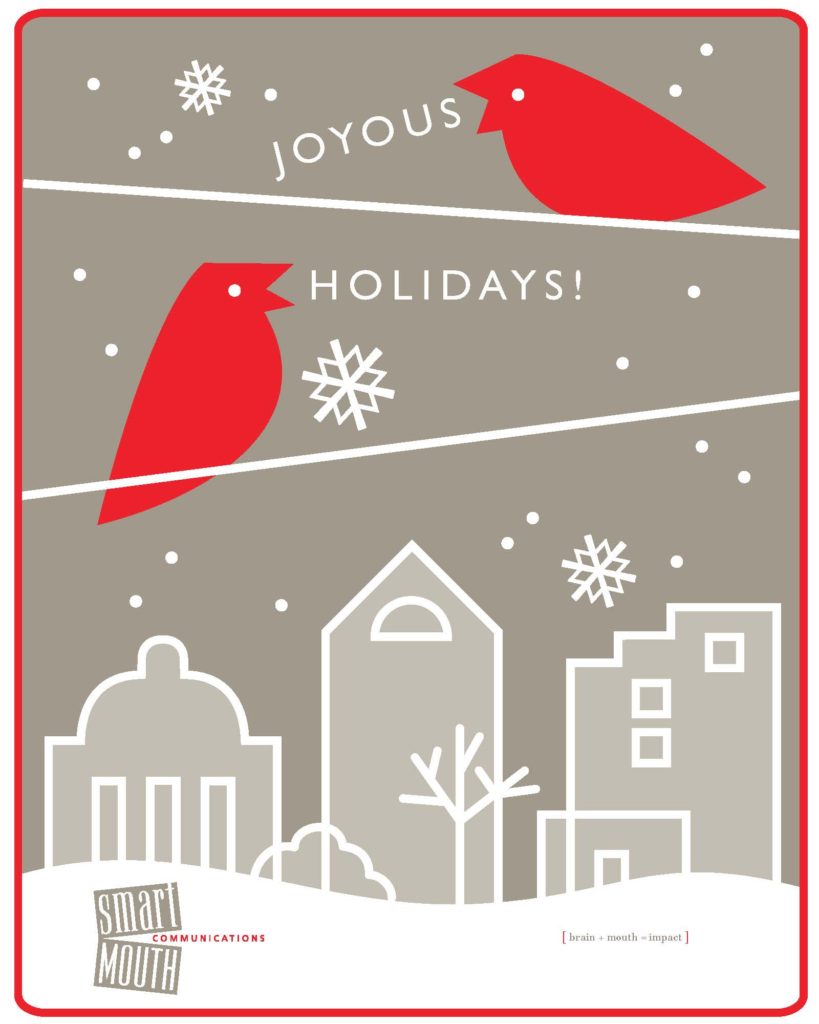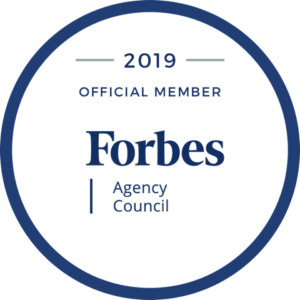by Beth Levine | Jun 28, 2021 | Just Mouthing Off, preparing for a presentation, public speaking
 When will you know you’re good? Maybe never. And that’s a good thing.
When will you know you’re good? Maybe never. And that’s a good thing.
You can be a highly confident, highly competent speaker and still not be as good as you want to be or think you should be. And that’s really a good thing.
Why? Because it keeps you on your toes. That’s the simple answer. You want to be on your toes for every audience. Once you think you’ve arrived, or that you’re good enough, you’ll get complacent and, trust me, it’ll show. Audiences will pick up on it. Just by the very nature of audiences – that each one is different – you are earning your stripes each time you get up to speak.
Being a good public speaker is a journey in which the endpoint is always moving and changing. You want it that way. You want to work at it, strive for it, and sweat it out.
If you’re like I am and you try to stay on your toes, then how else do you continue the journey to greatness as a speaker? The best coaching you can get, and the best way to get closer to that greatness, is to listen to audience feedback. Ask for it anecdotally or through evaluation forms, and then do something with it. Feedback is the GPS for your journey, be sure to pay attention to it!
So, when will you know you’re good? When you get to a point where you actually crave feedback, where you look for ways to adapt and improve all the time. Then I’d say you’re pretty darn good!
by Beth Levine | Jan 28, 2021 | Just Mouthing Off, preparing for a presentation, public speaking
 And now 2021 looms ahead with a lot of anticipation. Namely, we all are wondering … is the return to normal coming soon?
And now 2021 looms ahead with a lot of anticipation. Namely, we all are wondering … is the return to normal coming soon?
No one can say for sure. Workplaces have different policies and schedules for returning to the office … or not. Schools and professional sports teams have a plan … and a backup plan. Small businesses, hanging by a thread after all these months, are crossing their fingers and waiting … and waiting.
Still, no one can say for sure. And even if someone did say for sure, would you believe them? Ouch. It is for that reason, I assume (I haven’t tried to get confirmation), that President Biden’s first order of business is rebuilding trust.
Rebuilding trust is largely a communication task. It requires three main ingredients:
Transparency. True transparency is being honest and forthright with information, of course, but even more so, with emotion. Sharing the emotional piece – e.g. “we’re frustrated with the pace”; “we were disappointed in the results”; “we are overjoyed to learn that …” – humanizes the speaker and the organization. It strips away the robotic report-speak or corporate-speak that’s hard for audiences to relate to, and replaces those with humanity and feeling that truly reaches people.
Action. Words and actions need to be in lockstep with each another. One without the other is hollow. Actions require words to build awareness, and words require actions to build credibility. Awareness and credibility together build trust.
Patience and Persistence. Trust is earned over time. There’s no finger-snapping to make it happen faster. People need to get accustomed to the transparency and the follow-through on the action in order to even begin to trust. So, in building or rebuilding trust, an organization must be patient and persistent. There are no shortcuts.
Corporations, nonprofits, and governments all are susceptible to lapses in, or loss of, trust, and may be in the position of rebuilding it. If that’s the case, be aware that there’s no way around these three ingredients. The best of all possible circumstances, though, is never losing trust, and that only happens to organizations whose communications are transparent and who consistently follow through with the corresponding action.
Here’s to 2021 and a rebuilding of trust!
by Beth Levine | Jun 20, 2020 | Just Mouthing Off, preparing for a presentation, public speaking, smartmouth talks!
 In the early ‘80s in New York City, in my very first job, my very first colleague was Barack Obama. We both had just graduated college. We both started at the company within weeks of each other. We both were assigned entry level editorial jobs, working on a series of international business newsletters and reference books, and we both reported to the same supervisor.
In the early ‘80s in New York City, in my very first job, my very first colleague was Barack Obama. We both had just graduated college. We both started at the company within weeks of each other. We both were assigned entry level editorial jobs, working on a series of international business newsletters and reference books, and we both reported to the same supervisor.
Barack was smart, smooth, and savvy then. But he was also a little aloof. While he and I were friendly colleagues, chatted daily, and periodically went out for lunch, he pretty much kept to himself otherwise. He was the only black professional at the company; the other black employees worked as secretaries or in the mailroom. It was 35 years ago. Barack’s aloofness was also, in part, his “appropriateness” at the time. He didn’t have the latitude to be the social, chatty, sometimes loud and carousing associate that I could be.
When he became President – still smart, smooth and savvy – I watched him as infuriatingly unfair things were said to and about him, insults hurled at him (and his wife), and issues he championed were trashed or quashed. I frequently remarked to myself (and to anyone nearby who would listen) how cool, calm and collected he was no matter what because he had to be, he had no choice. He was a black man, and black men cannot get angry in public, it’s too threatening to white people.
Fast forward, and here we are. Nowhere. Issues of systemic racism, implicit bias, micro and macro aggressions against people of color have made no progress … except, perhaps, the hope generated by recent protests and the renewal of active public discourse.
For those of us who are allies, but are also white, there’s a self-consciousness about our privilege and some feelings of helplessness about what to do right now – besides using our voices, voting, and whatever other forms of activism we can engage in. I, for one, can tell you I have so much heart and mind invested in helping to right the wrongs, but I am often at a loss for what, specifically, I can do to effect positive change.
I decided that, for starters, I can use my platform and communicate. I typically write this monthly piece to share tips, insights and strategies for being a better communicator and presenter. But, given current events and my despair over the dual and intertwined pandemics of COVID-19 and racism, I just couldn’t. Tips, insights and strategies seemed so trite right now … and so privileged.
Instead, I decided to write about white privilege in the conference room and how we might begin to address and redress biases and inequities in meetings and presentations.
Here’s the deal: I can be late, I can get annoyed or angry, I can tell a bad joke, I can be sassy, I can exaggerate my mannerisms, I can interrupt or talk over someone else, I can mispronounce a word or phrase, I can leave the room early — all without any consequences simply because I’m white. I’m not proud of that, but I’m aware of it. I have the same latitude to be big, take up more than my fair share of space, mess up, and even be offensive – without serious consequence – that I had in the early ‘80s. People of color haven’t and don’t have these luxuries and won’t … unless and until we force an awareness and an openness on ourselves and others. We need to take action and find ways to hold ourselves and each other accountable for the biases and inequities in conference rooms.
Here’s my starter set of suggestions:
- Check yourself before you judge or speak up;
- Check your colleagues when they judge out loud or speak up;
- Hold a larger space for people to be different/do things differently.
Those, I would say, fall under the general heading of being tolerant. Beyond just tolerance, though, how about ways to be proactive?
- Invite team members who are people of color to be lead presenters (for some reason, the lead presenter is like an NFL quarterback – more often than not, white);
- Encourage directness and polite conflict, which, to date, have been more acceptable forms of communication for white people than people of color;
- Learn about micro-aggressions and develop a system for imposing a “check” on colleagues’ responses to one another.
I don’t profess to have all the answers. I only have an awareness, an openness, and a starter set of suggested actions … so far. I’d love some input from readers. Please give this some thought and then share your ideas here. Thanks.
by Beth Levine | Jul 10, 2019 | Just Mouthing Off, public speaking
 I’m so proud of my client! Let’s call him John.
I’m so proud of my client! Let’s call him John.
Over the past three months, John has been successful in adapting his communication style and effectiveness so much that it’s noticeable to (and appreciated by) his colleagues and superiors. Quite simply, he has started to use inquiry + listening for understanding before disagreeing or talking.
John is passionate about his work. He’s also incredibly smart. However, he had been getting mixed feedback about his communication style in meetings. Seems that some of his colleagues felt he talked too much and took too long get his thoughts out. Others believed he was thoughtful and measured and thorough. (Long-windedness is apparently in the ear of the beholder!) He was confused and frustrated, unsure of how opinions (gathered in a 360 performance appraisal) could be so divergent.
His boss reached out to me, hoping I might be able to help him communicate in a way that is more collegial and concise. She told me John is a highly skilled and valued manager, but that his style in meetings verged on pontificating and many found it overbearing. She had talked to him about it, and they agreed to get him some coaching.
Luckily, John was super self-aware and also motivated to improve. When we began working together, he and I dove into why and how he tended to make his longer, more involved points during meetings. Turns out, it came from a sincere place – his passion for his organization’s work and his drive to achieve good outcomes. Fair enough. What we worked on was basically audience-centricity, or putting the audience first. We did that in three ways:
- Using inquiry: Asking questions of other people so he could draw out context, examples and perspective. It helps avoid misunderstandings and makes others feel as though they’ve been heard. Inquiry surfaces material for better, more informed dialogue and decision-making.
- Listening for understanding … versus listening for responding: Being open and empathetic in how he pays attention to other speakers in the room. Most of us listen with only half an ear; the other half is busy formulating or finessing a response. Listening for understanding requires that you stop composing your response or put aside thoughts of responding until after you’ve assimilated what the speaker has said.
- Disagreeing diplomatically: Offering up an opposing view in a constructive way on those occasions when John disagreed with what he was hearing. This involves a combination of 1) repeating what you heard and understood from others to be sure you got it right, and 2) articulating the shared opinions or shared goals you have with the other speaker(s). After those two steps, which empathize and build connection, you are free to share your view.
Just like the old saying, “look before you leap,” you should also think before you talk. You may have a strong position or a lot to say, but your colleagues and clients want and need to be heard and understood first. It’s all about them, your audience, because you can’t and won’t achieve your goals without them.
by Beth Levine | Sep 18, 2018 | Just Mouthing Off, public speaking
You’re not special. But don’t worry, I’m not special either.
Why do I say that? Because no matter what we do – how well we prepare or how engaging we are – we will lose our audience at one point or another during our presentation. It’s just not realistic to assume that everyone in the audience will be able to hang on for every word, every slide, or even every key point of a talk.
 People check out. It’s a fact. And it’s not (necessarily) your fault. It’s the ebb and flow of the human attention span and the unavoidable distractions – both tangible (messages coming through on devices) and intangible (daydreaming, exhaustion, or randomly occurring thoughts) – that are to blame.
People check out. It’s a fact. And it’s not (necessarily) your fault. It’s the ebb and flow of the human attention span and the unavoidable distractions – both tangible (messages coming through on devices) and intangible (daydreaming, exhaustion, or randomly occurring thoughts) – that are to blame.
No matter how diligently you prepare or rehearse, it’s still not an insurance policy against audience members checking out during your presentation. As much as you plan a presentation for audiences to hear your every word, they won’t. They’ll drift off. You’re not special, and neither am I. We have to work to grab and hold their attention and we have to plan for their lapses in attention.
So, how do we do that? Below are 3 ways you can provide a helping hand to your audience members:
Be Brief
Unless your topic or audience call for a deep, thorough download, be as succinct as possible. Every time. In fact, I would advise you to think about whether people are in the room on their own free will (in which case you have some leeway) or out of obligation (in which case brevity is urgent). This will help you gauge how much time and detail you will use, and it will be better suited to your audience.
Know, don’t guess, how long your presentation is. Rehearse a few times and time yourself. This way, you’ll know if you need to make adjustments or cut some material. You’ll also be able to let your audience know what they’re in for from the start. If you can tell them how long your talk is, they’ll be better able to calibrate their own attention span – e.g. “oh, this is only 20 minutes? I can hang on for 20 minutes.”
Use Signposts
On your slides and as you are speaking, give your audience cues and clues as to where you are in your talk. Trust me, they need this. (You’ve needed it, haven’t you? Think about your own experiences sitting through presentations … I’m guessing there are at least a few instances when you would have liked some cues or clues!) Guide them.
Visually, you can help your audience by including a progress bar in your slides, so that your audience can track where you are in your presentation. Or, if you have a small deck, you can include a countdown – e.g. 1 of 12, 2 of 12, etc. Or, if you have, let’s say, three main sections that you told your audience you would be covering, you can let them know where you are by including the name or keyword for each section in the lower right corner. In fact, all of these visual cues are best situated in the lower right corner of your slides.
Verbally, you can keep your audience tracking by narrating where you are and what you’re doing. Some examples of this include: telling the audience how long your talk will be, letting them know when you’re digressing to share a relevant story, letting them know when the story is over and you’re returning to your point, alerting them whenever you’re transitioning from one section of your presentation to another, and (everyone’s favorite) announcing the conclusion.
Be Dramatic
Use the pregnant pause. Stop and stand in the middle of the stage. Animate or “act out” what you’re talking about. For example, if you say the number 4, hold up 4 fingers. Or if you say, “fast forward a few years,” roll your forearms, one over the other, to show motion. Or if you’re talking about something meaningful, touch your heart.
If “the show” moves along and there’s more to look at than just your visuals, people might hang in there with you better and longer. Before you resist and say I can’t do that, let me offer this: What might feel like theatrics to you will merely look like good delivery energy to your audience.
In a perfect world, speakers would be efficient enough with their words that audiences would be able to hang on every one of them. But as we all know, that’s not the case. Even the most efficient speakers and the best audiences have lapses – no matter how good or how special the speakers are! The best you can do to hold onto your audience’s attention is to take them by the hand and guide them through your presentation. The rest is up to them.
by Beth Levine | Dec 16, 2016 | Just Mouthing Off
Best wishes for a happy holiday season and a healthy, prosperous New Year!

 When will you know you’re good? Maybe never. And that’s a good thing.
When will you know you’re good? Maybe never. And that’s a good thing.
 And now 2021 looms ahead with a lot of anticipation. Namely, we all are wondering … is the return to normal coming soon?
And now 2021 looms ahead with a lot of anticipation. Namely, we all are wondering … is the return to normal coming soon? In the early ‘80s in New York City, in my very first job, my very first colleague was Barack Obama. We both had just graduated college. We both started at the company within weeks of each other. We both were assigned entry level editorial jobs, working on a series of international business newsletters and reference books, and we both reported to the same supervisor.
In the early ‘80s in New York City, in my very first job, my very first colleague was Barack Obama. We both had just graduated college. We both started at the company within weeks of each other. We both were assigned entry level editorial jobs, working on a series of international business newsletters and reference books, and we both reported to the same supervisor. I’m so proud of my client! Let’s call him John.
I’m so proud of my client! Let’s call him John.  People check out. It’s a fact. And it’s not (necessarily) your fault. It’s the ebb and flow of the human attention span and the unavoidable distractions – both tangible (messages coming through on devices) and intangible (daydreaming, exhaustion, or randomly occurring thoughts) – that are to blame.
People check out. It’s a fact. And it’s not (necessarily) your fault. It’s the ebb and flow of the human attention span and the unavoidable distractions – both tangible (messages coming through on devices) and intangible (daydreaming, exhaustion, or randomly occurring thoughts) – that are to blame.


